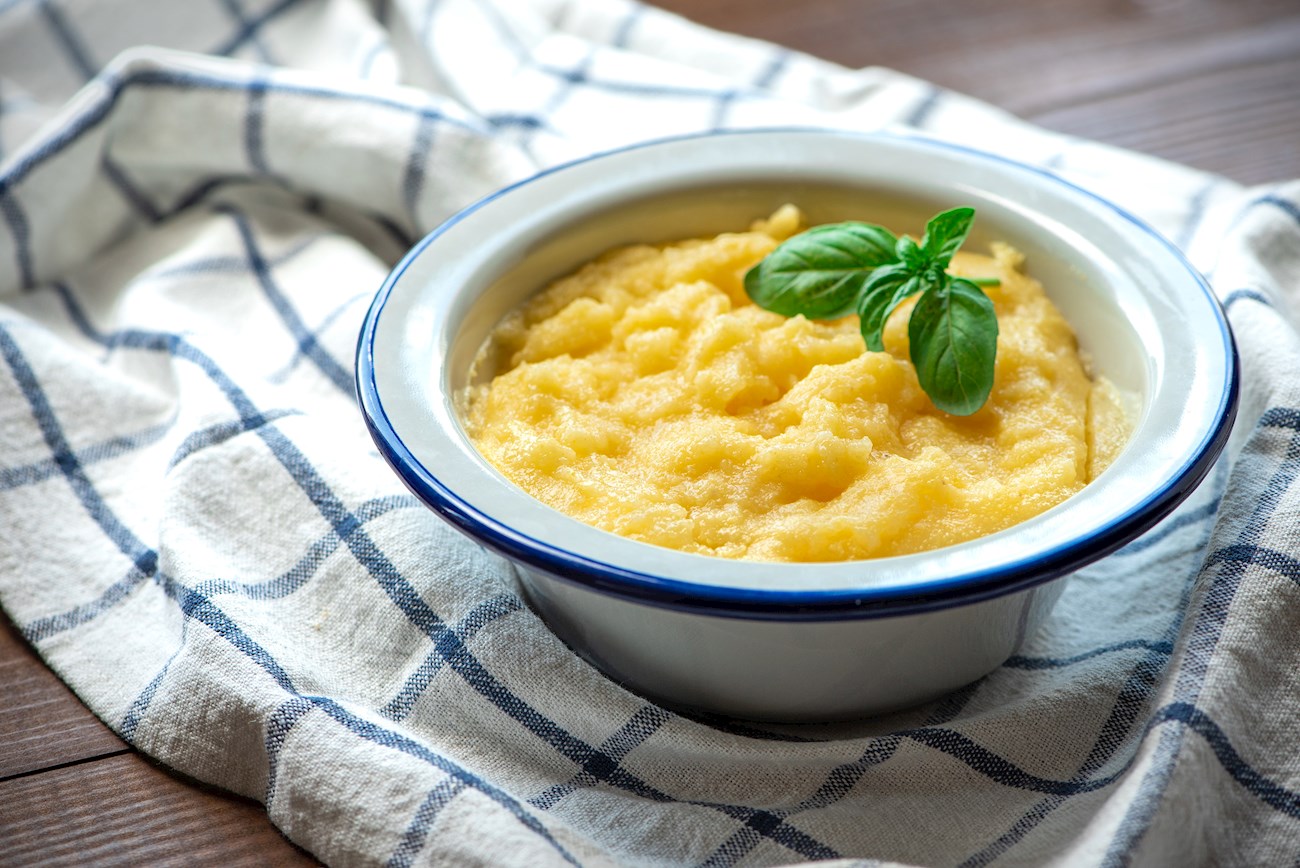Polenta
(Polente, Poleinte, Palenta, Polenda, Pulenda, Poenta, Pulenta, Poulento)
Polenta is an ancient dish of Northern Italian origin, most commonly made from coarse corn flour cooked in water. Although polenta today is characterized by its intense yellow color, before the arrival of corn in Europe in the 16th century, it was made with spelt, rye, and buckwheat, which gave it a much darker color.
In Roman times, polenta was called pulmentum, and it was a staple of both peasants and Roman soldiers, who were given portions of grain as field rations. In Italy today, polenta is still made using a copper pot called a paiolo and a long wooden spoon known as a tarello.
The boiled polenta is poured onto a flat surface or into a pan and left to cool and harden, and the cooled polenta cake is then traditionally cut into slices with a wooden knife or a cotton thread. Polenta is also characterized by its versatility; it can replace bread or pasta, it can serve as a side to fish or meat, or it can even be grilled and served with tomatoes and mushrooms.
Despite its humble beginnings, in recent years, polenta has made a steady move towards gourmet audiences and high-end restaurants.




